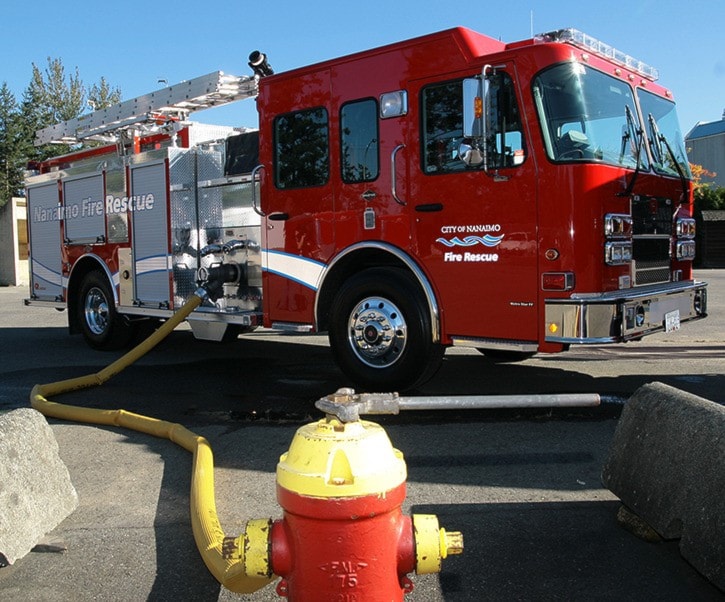Fire service will remain the status quo in the Harbour City and no new fire halls are planned, but residents will see firefighters step up education and prevention efforts.
Nanaimo city council approved a fire plan for the next 10 to 15 years that puts emphasis on prevention and sets out service delivery goals every three years. No additional resources are being asked for right now and Nanaimo Fire Rescue hasn’t resurrected a proposal for a new Hammond Bay fire hall that council cut from the budget in 2015.
This fire plan is considered a new approach.
Fire chief Craig Richardson said the challenge with the previous plan was that it was long and prescriptive, spanning many budget cycles and city councils.
“By breaking it into shorter pieces it allows current council to look at current conditions at three-year, or more, intervals and make decisions they will be accountable for budget wise,” Richardson said. “In other words, they are not establishing plans that other councils will have to implement. It’s about being more responsive.”
Nanaimo Fire Rescue will continue a policy of having four members on fire engines, and to make its response time, six minutes 90 per cent of the time for its first truck and 10 minutes 90 per cent of the time for the full assignment. While Richardson reports that latter has been achieved, the initial response has peaked at 81 per cent with areas of Jingle Pot, Westwood, Duke Point and Hammond Bay outside the fire departments’ ability to respond in six minutes.
To close the response gap, Richardson informed council it will mean additional resources at some point.
The first three-year plan lays out short-term goals, that will be under review, and is expected to cost $100,000.
The targets are to improve survival rates for cardiac arrests by boosting the numbers of people who are trained in bystander CPR and the use of public automated external defibrillators, help with disaster preparedness and do risk-focused fire prevention in downtown where the majority of structure fires, or 37 per cent, are happening.
The Fire Services Act doesn’t allow firefighters to enter private dwellings to do safety inspections and yet 76 per cent of fires are happening in residential buildings, according to Richardson, who says other jurisdictions have found a way in through compliance, getting customers to ask them to come into their homes to check alarms. In the last year, in anticipation of this plan, Nanaimo Fire Rescue has been going door-to-door within a one- to two-block radius of where fires happen, informing people about the incident and offering to check smoke alarms and do safety assessments. If smoke alarms aren’t functioning, Richardson said they install one, and have generally found people are receptive to the program.
In the next two weeks, a plan will be created around building programs and implementing them, which Richardson believes will happen by late summer.
